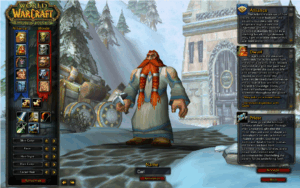The launch of a new video game is one of the most high-stakes moments in the entertainment world. Years of development, millions in investment, and the collective passion of a studio culminate in a single, critical period where a project either soars to success or stumbles into obscurity. In the past, a “game release” was a straightforward event: a game went “gold,” discs were pressed, and boxes hit store shelves. Today, that model is a relic. The modern game release is a complex, multi-stage, and continuous process—a strategic gauntlet that blends technology, marketing, and community management. From early access programs and playable demos to day-one patches and multi-year content roadmaps, understanding the anatomy of a contemporary game release is crucial for developers, publishers, and the dedicated Gaming Community alike.
This article dissects the intricate lifecycle of modern Game Releases. We will explore the strategic phases from pre-launch hype to post-launch support, analyze the critical choices developers face across different platforms like PC Gaming and Console Gaming, and delve into the human element of managing player expectations. Whether you’re an aspiring developer in the Gaming Industry or a passionate player eager to understand the forces that shape your favorite hobby, this comprehensive guide will illuminate the complex machinery that brings Video Games to your screen.
The Evolving Lifecycle of a Game Release
The journey of a game from a developer’s machine to a player’s hands has transformed into a multi-phased campaign. Each stage serves a distinct purpose, from building initial awareness and gathering crucial feedback to ensuring long-term player engagement. This evolution reflects a broader shift in the Gaming Industry towards games as ongoing services rather than one-time products.
Pre-Launch: Building Hype and Gathering Feedback
The pre-launch phase is arguably more important now than ever before. It’s no longer just about marketing; it’s about community building and iterative development. The first reveal—often a cinematic or gameplay trailer—is the opening salvo, designed to capture imagination and establish the game’s core identity. Following this, developers employ several key strategies:
- Playable Demos: A classic tactic seeing a major resurgence, particularly during digital events like Steam Next Fest. Demos provide a vertical slice of the game, giving players a hands-on feel for the mechanics and atmosphere. This direct engagement can convert curious onlookers into day-one buyers and generate valuable word-of-mouth marketing.
- Beta Testing (Closed and Open): Betas are essential for technical validation and gameplay balancing. A closed beta allows developers to test servers and core systems with a limited, controlled audience. An open beta, like the ones frequently seen for FPS Games such as Call of Duty or Battle Royale titles, acts as a massive stress test while simultaneously serving as a powerful marketing tool.
- Early Access: Popularized on Steam, early access allows studios, especially in the Indie Games space, to release a playable but incomplete version of their game for purchase. This model provides vital funding for continued development and incorporates the player base directly into the feedback loop. The multi-year early access period for Baldur’s Gate 3 is a prime case study in how this process can refine a game into a masterpiece, building a loyal community along the way.
Launch Day: The Moment of Truth
Launch day is the culmination of the pre-release campaign. The primary goal is a smooth, stable experience for all players. Technical challenges abound, from ensuring server infrastructure can handle the initial onslaught of players (a lesson learned from the infamous “Error 37” launch of Diablo III) to deploying a critical day-one patch to fix last-minute bugs. Platform logistics are also a major hurdle. Every game released on PlayStation News, Xbox News, or Nintendo News must pass a rigorous certification process, ensuring it meets the platform holder’s technical and content standards. A simultaneous global launch requires immense coordination across time zones, digital storefronts like the PlayStation Store, Xbox Games Store, and Nintendo eShop, and physical retail distribution.

Post-Launch: The Game as a Service
For many modern titles, the release date is just the beginning of the journey. The post-launch phase determines a game’s long-term legacy and profitability. The redemption arc of No Man’s Sky, which transformed from a controversial launch into a beloved exploration game through years of free, substantial updates, stands as a testament to the power of post-launch commitment. Conversely, the troubled launch of Cyberpunk 2077 highlighted the damage that can be done when a game is released before it’s ready, requiring a massive, multi-year effort to fix core systems and restore player trust. This era is defined by:
- Patches and Hotfixes: Regular updates to address bugs, performance issues, and security vulnerabilities.
- Content Roadmaps: A transparent plan for future content, including new levels, characters, modes, and story expansions, which keeps the community engaged and informed.
- Monetization Models: From one-time DLC purchases to seasonal battle passes seen in games like Fortnite and Apex Legends, post-launch monetization funds ongoing development for live-service titles.
Platform Dynamics and Strategic Choices
Choosing where and how to release a game is one of the most critical decisions a developer makes. Each platform presents a unique ecosystem with its own audience, technical requirements, and business models. The decision between exclusivity and a multi-platform release can define a game’s reach and financial success.
The Walled Gardens: Console Exclusivity vs. Multi-Platform
The world of Console Gaming is dominated by Sony, Microsoft, and Nintendo. Launching exclusively on one platform offers significant benefits, including direct marketing and financial support from the platform holder, and the ability to optimize deeply for a single set of Gaming Hardware. This can result in a more polished and performant experience. However, it inherently limits the potential audience. A multi-platform release on PlayStation, Xbox, and PC casts a wider net but introduces immense complexity. Developers must manage different hardware architectures (e.g., PS5’s SSD vs. Xbox Series X’s CPU), varying certification processes, and the challenge of delivering a consistent experience for all players. Timed exclusives offer a middle ground, providing an initial injection of cash from a platform holder before a later release on other systems.
The PC Gaming Ecosystem: A Double-Edged Sword
PC Gaming offers the largest potential audience and the most open platform, but it is also the most fragmented. Developers must contend with a nearly infinite combination of Gaming PCs, Gaming Laptops, Graphics Cards (from both NVIDIA and AMD), CPUs, and Gaming Monitors with different resolutions and refresh rates. This makes optimization a monumental task. The PC market is also divided between storefronts, primarily Steam News and Epic Games News. While Steam is the dominant player, the Epic Games Store has attracted developers with more favorable revenue splits and by funding exclusives. The PC platform also fosters a vibrant Game Mods community, which can dramatically extend a game’s lifespan and appeal, as seen with titles like The Elder Scrolls V: Skyrim and Minecraft.
The Rise of Alternative Platforms
Beyond the traditional console and PC markets, other platforms are gaining significant traction. Mobile Gaming is the largest segment of the market by revenue, offering massive reach but demanding different design principles centered on touch controls and shorter play sessions. Cloud Gaming services like Xbox Cloud Gaming and NVIDIA GeForce Now are changing how games are accessed, allowing players to stream AAA titles to nearly any device without powerful local hardware. This technology has the potential to eliminate lengthy downloads and hardware barriers to entry. Furthermore, VR Gaming and AR Gaming represent a growing niche, requiring developers to build experiences from the ground up for immersive, motion-controlled gameplay, utilizing hardware like the Meta Quest or PlayStation VR2.

The Human Element: Community, Marketing, and Media
Technology and strategy are only part of the equation. A successful game release hinges on the human element: how a studio communicates with its audience, manages expectations, and navigates the landscape of modern media and influencers.
Marketing in the Digital Age
The days of relying solely on magazine ads and E3 presentations are over. Modern game marketing is a 24/7 operation centered on direct community engagement. Platforms like Discord and Reddit have become vital hubs for developers to interact with fans, share Game Development updates using engines like Unity or Unreal Engine, and gather feedback. Influencer marketing and Game Streaming on Twitch are paramount; a popular streamer playing a new Indie Game can drive more sales in a single afternoon than a traditional ad campaign. This ecosystem also includes Esports News and Competitive Gaming, where titles like Valorant, League of Legends, and Counter-Strike build massive, dedicated audiences through high-stakes tournaments and professional leagues.
Managing Expectations: The Perils of Hype
Hype is a powerful tool, but it can be a dangerous one. Over-promising and under-delivering is one of the fastest ways to destroy player trust. The aforementioned case of Cyberpunk 2077 serves as the ultimate cautionary tale, where a masterful marketing campaign created expectations that the final product, particularly on last-gen consoles, could not meet. The resulting backlash was immense and damaging to the studio’s reputation. In contrast, the surprise launch of Apex Legends and the organic growth of Helldivers 2 demonstrate the power of a different approach. By launching a polished, fun game with minimal pre-release hype or by being transparent about the game’s scope, these titles allowed the community’s positive experience to drive the narrative, leading to massive, sustained success.
The Indie Developer’s Playbook
For small teams without AAA marketing budgets, a successful release requires creativity and strategic focus. The key is to cultivate a niche audience and build a community early. A strong, unique artistic vision or Game Design hook is essential to stand out in a crowded market. Leveraging social media to share the development journey creates a personal connection with potential players. Participating in events like Steam Next Fest provides invaluable visibility. For many indie developers, the ultimate goal is to create a “viral loop” where the quality of the game itself encourages players to become its most passionate advocates.
Best Practices and Future Outlook
Navigating the modern release landscape requires a holistic approach. By combining technical excellence with savvy marketing and genuine community engagement, developers can significantly increase their chances of success. As technology and player habits continue to evolve, the strategies for releasing games will evolve alongside them.
Recommendations for a Successful Release
- Communicate Transparently: Be open and honest with your community about development progress, potential delays, and post-launch plans. A clear roadmap builds trust.
- Prioritize Technical Stability: A buggy or poorly optimized launch can permanently tarnish a game’s reputation. Rigorous QA testing across a wide range of Gaming Hardware, from high-end Gaming PCs to base consoles, is non-negotiable.
- Leverage Early Feedback: Use demos, betas, and early access not just for marketing, but as genuine development tools to refine gameplay and fix issues before the official launch.
- Empower Your Community: Foster a positive and inclusive environment. Support content creators, highlight community creations, and listen to player feedback. Your community can be your greatest asset.
- Plan for the Long Term: For many games, especially in genres like MMORPG or MOBA, launch is just the starting line. A well-defined post-launch content plan is essential for player retention and long-term revenue.
The Future of Game Releases
Looking ahead, several trends are set to further reshape the release landscape. Subscription services like Xbox Game Pass are changing the economic model, prioritizing player engagement over individual unit sales. A day-one launch on Game Pass can provide a massive initial player base and secure funding for a project. Cloud Gaming will continue to lower the barrier to entry, potentially making traditional hardware cycles and long install times a thing of the past. Finally, advancements in AI and procedural generation within game engines like Unreal Engine may shorten development cycles, allowing for more dynamic and responsive content delivery post-launch. The “release” will become even more fluid—a continuous conversation between the game and its players.
Conclusion
The modern game release is a far cry from the simple, fire-and-forget launches of the Retro Gaming era. It has evolved into a dynamic, continuous lifecycle that demands technical prowess, strategic foresight, and a deep understanding of the player community. From the first reveal trailer to the fifth year of content updates, success is no longer measured by a single day’s sales but by sustained engagement and the cultivation of a loyal fan base. The journey is fraught with pitfalls, from technical disasters to mismanaged hype, but the rewards are immense. For the developers and publishers who successfully navigate this complex gauntlet, the result is not just a successful product, but a vibrant, living world that can captivate players for years to come.











